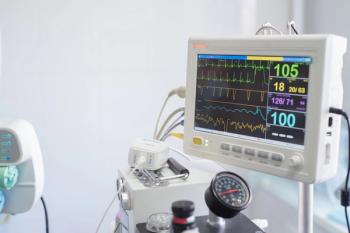
Cervical cancer screening
A commentary on ACOG Practice Bulletin Number 131: Screening for Cervical Cancer, November 2012
Committee on Practice Bulletins--Gynecology
ACOG Practice Bulletin Number 131: Screening for Cervical Cancer, November 2012 Obstet Gynecol 2012;120(5):1222-1238. Full text of ACOG Practice Bulletin is available to ACOG members at http://www.acog.org/Resources_And_Publications/Practice_Bulletins/Committee_on_Practice_Bulletins_--_Gynecology/Screening_for_Cervical_Cancer
Screening for Cervical Cancer
The incidence of cervical cancer in the United States has decreased more than 50% in the past 30 years because of widespread screening with cervical cytology. In 1975, the rate was 14.8 per 100,000 women. By 2008, it had been reduced to 6.6 per 100,000 women. Mortality from the disease has undergone a similar decrease from 5.55 per 100,000 women in 1975 to 2.38 per 100,000 women in 2008 (1). The American Cancer Society (ACS) estimates that there will be 12,170 new cases of cervical cancer in the United States in 2012, with 4,220 deaths from the disease (2). Cervical cancer is much more common worldwide, particularly in countries without screening programs, with an estimated 530,000 new cases of the disease and 275,000 resultant deaths each year (3, 4). When cervical cancer screening programs have been introduced into communities, marked reductions in cervical cancer incidence have followed (5, 6).
New technologies for cervical cancer screening continue to evolve as do recommendations for managing the results. In addition, there are different risk–benefit considerations for women at different ages, as reflected in age-specific screening recommendations. The ACS, the American Society for Colposcopy and Cervical Pathology (ASCCP), and the American Society for Clinical Pathology (ASCP) have recently updated their joint guidelines for cervical cancer screening (7), and an update to the U.S. Preventive Services Task Force recommendations also has been issued (8). The purpose of this document is to provide a review of the best available evidence regarding screening for cervical cancer.
Cervical Cancer Screening: Better Patient Care with Fewer Pap Smears
By Joshua G. Cohen, MD, and Robin Farias-Eisner, MD, PhD
Dr. Cohen is a second-year Gynecologic Oncology Fellow at UCLA and Cedars-Sinai Medical Center.
Dr. Farias-Eisner is Chief of Gynecology and Gynecologic Oncology in the Department of Obstetrics and Gynecology at UCLA, a Principle Investigator for the National Cancer Institute and Gynecologic Oncology Group, Director of the Center for Biomarker Discovery and Research at UCLA, and a member of the Contemporary OB/GYN Editorial Board.
ACOG Practice Bulletin 131: Screening for Cervical Cancer, issued in November 2012, replaces Practice Bulletin 109 from 2009.1 The new guidelines attempt to optimize the benefits of cervical cancer screening while reducing the harms of unnecessary intervention. The practice bulletin comports with the American Cancer Society (ACS)/American Society of Colposcopy and Cervical Pathology (ASCCP)/American Society of Clinical Pathology (ASCP) guidelines issued in April 2012 and the guidelines issued by the United States Preventive Services Task Force (USPSTF) in June 2012.2-3
As with the ACOG guidelines published in 2009, this practice bulletin recommends that cervical cancer screening begin at age 21 regardless of the age of sexual debut. This is based on the extremely rare incidence of cervical cancer in women under 21. Fewer than 0.1% of cases of cervical cancer occur before age 20.4 Moreover, prior screening in this age group has not been shown to be efficacious in preventing cervical cancer, but interventions may increase the risk of morbidity, such as preterm delivery.5-6 The new practice bulletin also reaffirms that those patients who are immunocompromised or HIV positive, who were exposed to diethylstilbestrol (DES) in utero, or who have a history of cervical intraepithelial neoplasia (CIN) 2, CIN 3, or cancer may require more frequent cervical cancer screening.
The new Practice Bulletin recommends that women aged 21 to 29 undergo cytology every 3 years rather than every 2 years. Co-testing should not be performed in women younger than 30 years. An age-matched controlled study composed of patients from UK cervical cancer screening databases demonstrated no difference in risk of cervical cancer between women screened at 2 years vs. those screened 3 years after their last negative result.7 There are no randomized controlled trials (RCTs) to evaluate the interval of screening in this age group. Rather, the ACOG guidelines extend the interval to 3 years based largely on modeling studies.8 Screening women younger than age 30 at 2- vs. 3-year intervals carried the same lifetime risk of cervical cancer: 0.05 per 1000 women.3
The new Practice Bulletin also recommends that women aged 30 to 65 undergo cytology and human papillomavirus (HPV) co-testing every 5 years as the preferred method of screening, with cytology every 3 years listed as an acceptable alternative. This is in contrast to the 2009 recommendation of cytology and HPV co-testing every 3 years. Recent clinical trials have shown that cytology with HPV co-testing results in increased sensitivity for detection of CIN 3 or greater, and HPV testing leads to a subsequent lower incidence of CIN 3/invasive cancer after the first screening round compared to cytology alone.9-11 A population-based study involving 331,818 women demonstrated a 0.016% risk of cervical cancer 5 years after negative co-testing, compared to a 0.018% risk 3 years after negative cytology screening alone.12 In a cohort of 24,295 women, Dillner et al found that the 6-year risk of CIN 3 or worse was significantly lower following a negative HPV test than following negative cytology alone: 0.27% (95% CI 0.12 to 45%) versus 0.97% (95% CI 0.53 to 1.34%).13 These data, along with modeling data, indicate that patients who have negative co-testing with HPV and cytology in this age group can undergo screening every 5 years without an increase in cervical cancer occurrence.
The new Practice Bulletin recommends that women aged 65 and older no longer undergo screening if they meet the following criteria: 1) no history of CIN 2+ in the past 20 years, 2) adequate negative prior screening with 3 consecutive negative cytology results or 2 consecutive negative cytology and HPV co-testing results within the last 10 years, with the most recent test within the past 5 years, 3) no personal history of HIV or other immunocompromised conditions, and 4) no previous exposure to DES. A modeling study by Kulasingam et al., found that if women were screened every 3 years until age 90 vs no screening after age 65, there would be 2.6 fewer cancer cases and 0.98 fewer cancer deaths per 1000 women at the cost of 84.81 false-positive tests and 186.14 additional colposcopies per 1000 women.14 In a community-based cohort of 11,923 women in Taiwan followed over 16 years, women 55 and older who were persistently HPV negative had an extremely low risk of subsequent development of cervical cancer at 0.08%.15 Routine screening in women older than 65 is low yield if they have had prior negative screening.
A new addition to the ACOG guidelines is the triage of women with atypical squamous cells of undetermined significance (ASCUS) cytology and negative HPV co-testing. The guidelines recommend that women with ASCUS cytology and negative HPV co-testing continue routine screening as indicated for their age. In the Addressing the Need for Advanced HPV Diagnostics (ATHENA) study, only 0.28% of women with an ASCUS cytology and HPV negative co-testing were found have CIN 3 or worse on cervical biospy.16 In another cohort study, the risk of CIN 3 was 0.54% at 5 years in patients with ASCUS cytology and negative HPV co-testing, compared to 0.36% for women with negative cytology alone.12 The available evidence supports the use of HPV testing to triage women with an ASCUS cytology given the very low risk of CIN 3 in these patients.
With the practice bulletin endorsing use of HPV co-testing in women aged 30 to 65, there are now recommendations for women with negative cytology and positive HPV co-testing. Women aged 30 and older are recommended to undergo repeat co-testing in 12 months or immediate HPV genotype-specific testing for HPV-16 alone or HPV-16/18. Those who test positive for HPV-16 or HPV 16/18 should undergo colposcopy immediately. If the patient tests negative for these high-risk subtypes, then repeat co-testing in 12 months is recommended. There are no RCTs evaluating this management strategy. Among 11 prospective studies with 1-16 year follow-up, there was a 12-month risk of CIN 3 of 0.8% to 4.1% if a patient had a negative cytology result and positive HPV co-test.17 This range is well below the risk threshold for CIN 3 used for referral of HPV-positive women with ASCUS or low-grade squamous intraepithelial lesion (LSIL) to colposcopy, with those patients’ risk of CIN 3 being approximately 8% - 10% over 2 years.18-19 The recommendation for repeat testing at 12 months is based on the premise that many patients will clear a transient HPV infection over that time, resulting in less unnecessary invasive testing while exposing patients to minimal risk.3
Concerns
The extended time between screening visits will allow 5 years to elapse for patients aged 30 to 65 years who meet criteria. Over the course of 5 years it may be challenging for many patients to remember to return for a Pap smear and HPV test. If patients do not follow up for cervical cancer screening in 5 years, the potential benefits of decreased screening will quickly turn to a disadvantage. As we move forward with these guidelines it will be important for physicians to maintain contact with their patients in other ways. As recommended by ACOG, family planning, screening for sexually transmitted infections, healthy eating, sexual function, menopause symptoms, osteoporosis prevention, and breast screening all represent important reasons for a patient to continue to see her physician more than once every 5 years. Moreover, as we move forward with the electronic medical records it may be prudent to develop an infrastructure that allows patients to receive automatic annual reminders for screening tests that are due, such as cervical, breast, and colon cancer screening.
In addition to ensuring patient follow up, physician acceptance and implementation of these new guidelines are critical. With less-frequent screening recommended, it may be a significant challenge for physicians to move away from closer observation. The Centers for Disease Control and Prevention evaluated the Behavioral Risk Factor Surveillance System (BRFSS) for women aged 18 to 30 years and found that among women aged 18 to 21 years, the percentage who reported never having had a Pap test increased from 26.3% in the year 2000 to 47.5% in 2010.20 These data suggest that providers have started to defer Pap smears in patients younger than 21, consistent with guidelines from 2009.
The HPV vaccination represents a major advancement in the prevention of cervical dysplasia, yet in 2010 only 14.1% of uninsured girls between aged 13 to 17 received 3 doses of the HPV vaccine.21 At the current rate of vaccination, it may be decades before providers see the clinical benefit from administration of the vaccine. The new guidelines in Practice Bulletin 131 affirm that vaccinated and nonvaccinated patients should be screened in the same fashion, but the next step-and perhaps a more important one from a global health standpoint-would be to recommend the vaccine be given to all women who meet age criteria.22
The additions of triage guidelines through ACOG underscore the importance to assess clarity of purpose in HPV testing and how it is best used. Further prospective data are needed to better delineate when various HPV genotype-specific testing should be incorporated (ie, HPV 16 alone, HPV 16/18, all high-risk HPVs). As many more HPV assays become available in various forms and with more cost savings, it will become increasingly important that they be organized in an appropriate algorithm, both for screening and triage purposes. But if physicians start incorporating various HPV tests into their upfront evaluation of patients without established guidelines, costs of tests will likely outweigh benefit.
Overall, the new ACOG guidelines represent a move in the correct direction. The change in frequency of cervical cancer screening will decrease unnecessary testing. We must continually assess the balance between appropriate screening benefits and the harms that come with such strategies. It is through this systematic reassessment that patient care will be optimized and cervical cancer incidence will be reduced.
Commentary References
Committee on Practice Bulletins-Gynecology. ACOG Practice Bulletin No. 131: Screening for cervical cancer. Obstet Gynecol. 2012;120(5):1222-1238.
Moyer VA. Screening for cervical cancer: U.S. Preventive Services Task Force recommendation statement. Ann Intern Med. 2012;156(12):880-891, W312.
Saslow D, Solomon D, Lawson HW, et al. American Cancer Society, American Society for Colposcopy and Cervical Pathology, and American Society for Clinical Pathology screening guidelines for the prevention and early detection of cervical cancer. Am J Clin Pathol. 2012;137(4):516-542.
Watson M, Saraiya M, Benard V, et al. Burden of cervical cancer in the United States, 1998-2003. Cancer. 2008;113(10 Suppl):2855-2864.
Sasieni,P, Castanon A, Cuzick J. Effectiveness of cervical screening with age: population based case-control study of prospectively recorded data. BMJ. 2009;339, b2968-b2968.
Kulasingam SL, Havrilesky L, Ghebre R, et al. Screening for Cervical Cancer: A Decision Analysis for the U.S. Preventive Services Task Force [Internet]. Rockville (MD): Agency for Healthcare Research and Quality (US); 2011 May. (Evidence Syntheses, No. 86s.) Available from: http://www.ncbi.nlm.nih.gov/books/NBK92546/
Sasieni P, Adams J, Cuzick J. Benefit of cervical screening at different ages: evidence from the UK audit of screening histories. Br J Cancer. 2003;89(1):88-93.
Jin XW, Lipold L, McKenzie M, et al. Cervical cancer screening: what's new and what's coming? Cleve Clin J Med. 2013;80(3):153-160.
Bulkmans NW, Berkhof J, Rozendaal L, et al. Human papillomavirus DNA testing for the detection of cervical intraepithelial neoplasia grade 3 and cancer: 5-year follow-up of a randomised controlled implementation trial. Lancet. 2007;370(9601):1764-1772.
Rijkaart DC, Berkhof J, Rozendaal L, et al.Human papillomavirus testing for the detection of high-grade cervical intraepithelial neoplasia and cancer: final results of the POBASCAM randomised controlled trial. Lancet Oncol. 2012;13(1):78-88.
Ronco,G, Giorgi Rossi P, Carozzi F, et al. Efficacy of human papillomavirus testing for the detection of invasive cervical cancers and cervical intraepithelial neoplasia: a randomised controlled trial. Lancet Oncol. 2012;11(3):249-257.
Katki HA, Kinney WK, Fetterman B, et al. (2011). Cervical cancer risk for women undergoing concurrent testing for human papillomavirus and cervical cytology: a population-based study in routine clinical practice. Lancet Oncol. 2011;12(7):663-672.
Dillner, J, Rebolj, M, Birembaut, P, et al. Long term predictive values of cytology and human papillomavirus testing in cervical cancer screening: joint European cohort study. BMJ. 2008;337, a1754-a1754.
Kulasingam, S L, Havrilesky, L J, Ghebre, R, et al. Screening for Cervical Cancer: A Modeling Study for the US Preventive Services Task Force. J Low Genit Tract Dis. 2013;17(2);193-202.
Chen H, Schiffman,M, Lin C, et al. Persistence of type-specific human papillomavirus infection and increased long-term risk of cervical cancer. J Natl Cancer Inst. 2011;103(18):1387-1396.
Stoler,MH, Wright TC, Sharma A, et al. High-risk human papillomavirus testing in women with ASC-US cytology: results from the ATHENA HPV study. Am J Clin Pathol. 2011;135(3):468-475.
Wright TC, Stoler MH, Sharma A, et al. Evaluation of HPV-16 and HPV-18 genotyping for the triage of women with high-risk HPV+ cytology-negative results. Am J Clin Pathol. 2011;136(4):578-586.
Results of a randomized trial on the management of cytology interpretations of atypical squamous cells of undetermined significance. Am J Obstet Gynecol. 2003;188(6):1383-1392.
A randomized trial on the management of low-grade squamous intraepithelial lesion cytology interpretations. Am J Obstet Gynecol. 2003;188(6):1393-1400.
Cervical cancer screening among women aged 18-30 years - United States, 2000-2010. MMWR. 2013; 61(51-52):1038-1042.
Jemal A, Simard EP, Dorell C, et al. Annual Report to the Nation on the Status of Cancer, 1975-2009, featuring the burden and trends in human papillomavirus(HPV)-associated cancers and HPV vaccination coverage levels. J Natl Cancer Inst. 2013;105(3):175-201.
Committee on Adolescent Health Care. ACOG Committee Opinion No. 467. Human papillomavirus vaccination. Obstet Gynecol. 2010;116:800-803.
ACOG Abstract References
1. Howlader N, Noone AM, Krapcho M, Neyman N, Aminou R, Altekruse SF, et al, editors. SEER cancer statistics review, 1975-2009 (vintage 2009 populations). Bethesda (MD): National Cancer Institute; 2012. Available at: http://seer.cancer.gov/csr/1975_2009_pops09. Retrieved July 27, 2012. (Level II-3)
2. Siegel R, Naishadham D, Jemal A. Cancer statistics, 2012. CA Cancer J Clin. 2012;62:10–29. (Level II-3)
3. Ferlay J, Shin HR, Bray F, Forman D, Mathers C, Parkin DM. GLOBOCAN 2008 v1.2, Cancer Incidence and Mortality Worldwide: IARC CancerBase No. 10. Lyon (France): International Agency for Research on Cancer; 2010. Available at: http://globocan.iarc.fr. Retrieved August 3, 2012. (Level II-3)
4. Arbyn M, Castellsague X, de Sanjose S, Bruni L, Saraiya M, Bray F, et al. Worldwide burden of cervical cancer in 2008. Ann Oncol. 2011;22:2675–86. (Level III)
5. Gustafsson L, Ponten J, Bergstrom R, Adami HO. International incidence rates of invasive cervical cancer before papillocytological screening. Int J Cancer. 1997;71:159–165. (Level II-3)
6. Gustafsson L, Ponten J, Zack M, Adami HO. International incidence rates of invasive cervical cancer after introduction of cytological screening. Cancer Causes Control 1997;8:755–763. (Level II-3)
7. Saslow D, Solomon D, Lawson HW, Killackey M, Kulasingam SL, Cain J, et al. American Cancer Society, American Society for Colposcopy and Cervical Pathology, and American Society for Clinical Pathology screening guidelines for the prevention and early detection of cervical cancer. CA Cancer J Clin. 2012;62:147–172. (Level III)
8. Moyer VA. Screening for cervical cancer: U.S. Preventive Services Task Force recommendation statement. U.S. Preventive Services Task Force. Ann Intern Med. 2012;156:880–891. (Level III)
Newsletter
Get the latest clinical updates, case studies, and expert commentary in obstetric and gynecologic care. Sign up now to stay informed.
















